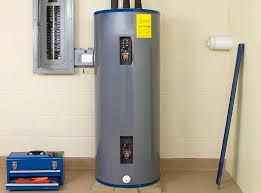They are making a number of good observations relating to Tips For Maintaining Your Hot Water Heater in general in the content down below.

Warm water is essential for daily convenience, whether it's for a revitalizing shower or washing dishes. To guarantee your hot water system runs efficiently and lasts much longer, routine maintenance is essential. This post gives practical pointers and insights on exactly how to maintain your home's warm water system to avoid interruptions and pricey repair work.
Intro
Keeping your home's hot water system may appear challenging, however with a couple of straightforward steps, you can ensure it operates smoothly for many years ahead. This overview covers every little thing from comprehending your warm water system to DIY upkeep ideas and understanding when to contact professional assistance.
Value of Keeping Your Warm Water System
Normal maintenance not only extends the life expectancy of your warm water system but also ensures it runs successfully. Disregarding upkeep can lead to reduced performance, higher energy expenses, and also early failure of the system.
Indicators Your Warm Water System Needs Maintenance
Understanding when your warm water system requires focus can protect against major issues. Look out for signs such as inconsistent water temperature, odd sounds from the heating system, or corroded water.
Understanding Your Hot Water System
Before diving into upkeep jobs, it's practical to understand the fundamental parts of your hot water system. Normally, this includes the hot water heater itself, pipes, anode rods, and temperature level controls.
Month-to-month Upkeep Tasks
Regular monthly checks can aid catch small concerns prior to they intensify.
Flushing the Hot Water Heater
Flushing your hot water heater gets rid of sediment accumulation, improving effectiveness and lengthening its life.
Checking and Changing Anode Rods
Anode poles avoid rust inside the container. Checking and changing them when worn out is critical.
Inspecting and Adjusting Temperature Setups
Readjusting the temperature level setups ensures optimal performance and security.
Do It Yourself Tips for Upkeep
You can perform several maintenance jobs yourself to keep your warm water system in top condition.
Looking for Leaks
Regularly inspect pipelines and connections for leakages, as these can result in water damages and higher bills.
Checking Pressure Alleviation Valves
Evaluating the pressure relief valve guarantees it operates appropriately and avoids excessive pressure build-up.
Insulating Pipes
Shielding hot water pipelines decreases heat loss and can conserve energy.
When to Call a Professional
While do it yourself maintenance is beneficial, some problems call for expert proficiency.
Facility Concerns Calling For Expert Help
Instances include significant leaks, electric issues, or if your water heater is consistently underperforming.
Regular Expert Upkeep Perks
Professional maintenance can consist of extensive inspections, tune-ups, and making sure conformity with safety requirements.
Verdict
Routine upkeep of your home's warm water system is important for effectiveness, durability, and cost savings. By adhering to these pointers and recognizing when to seek professional help, you can make certain a trusted supply of warm water without unexpected disturbances.
How to Maintain an Instant Hot Water Heater
Before tinkering with your hot water heater, make sure that it’s not powered on. You also have to turn off the main circuit breaker and shut off the main gas line to prevent accidents. Also turn off the water valves connected to your unit to prevent water from flowing into and out of the appliance. 2. When you’re done, you have to detach the purge valves’ caps. These look like the letter “T†and are situated on either side of the water valves. Doing so will release any pressure that has accumulated inside the valves while at the same time avoid hot water from shooting out and burning your skin. 3. When the purge valves’ caps are removed, you have to connect your hosing lines to the valves. Your unit should have come with three hoses but if it didn’t, you can purchase these things from any hardware or home repair shops. You can also get them from retail stores that sell water heating systems. Read the user’s manual and follow it to complete this task properly. When the hosing lines are connected, open the purge port’s valves. 4. You should never use harsh chemical cleaners or solutions when cleaning your unit. Make use of white vinegar instead. It should be undiluted and you’ll probably use about 2 gallons. 5. Now flush your water heater. This task should probably take about 40 minutes. We can’t give you specific directions for this because the procedure is carried out depending on the type, model and brand of your heater. With that being said, refer to the user’s manual. 6. When you’re done draining the unit, you have to turn off the purge port valves again. Remove the hosing lines that you earlier installed on each of the water valves. Put the valve caps (purge port) back in their respective places and be very careful so as not to damage the rubber discs that are found inside these caps. 7. Now that everything’s back in place, check your user’s manual again to find out how to reactivate your water heating system. 8. Once it is working, turn one of your hot water faucets on just to let air pass through the heater’s water supply pipes. Leave the tap on until water flows smoothly out of it. https://www.orrplumbing.com/blog/2014/september/how-to-maintain-an-instant-hot-water-heater/

As a fervent person who reads on Tips on Maintaining a Water Heater, I imagined sharing that excerpt was worthwhile. Do you know about somebody else who is sincerely interested in the subject? Feel free to promote it. I praise you for your time. Please pay a visit to our site back soon.
Maintenance Sign-Up